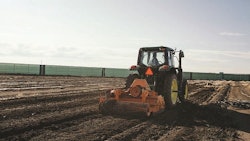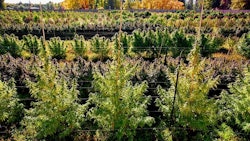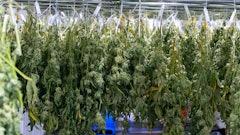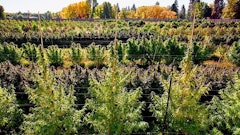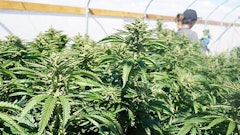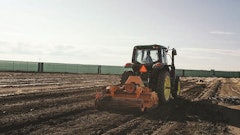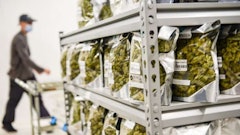
Editor's note: This article was originally published in our February 2020 issue.
For outdoor cannabis cultivators, the harvest marks the end of an intensely busy growing season. But as operations wrap up, proactive growers use their downtime wisely to start preparing for next year.
To make the most of each season, cultivators must gear up long before they begin planting their crops. Cannabis Business Times spoke with several outdoor growers and consultants to collect the top seven tasks cultivators should add to their offseason checklist.
1. Winterize and sanitize
By this time of year, growers should have already begun basic offseason planning. That means cleaning, sanitizing and winterizing equipment and growing materials.
“You can spend a lot of money on tools getting lost and damaged, so doing a fall cleanup makes a huge difference,” says Dr. Jade Stefano, co-founder and CEO of Puffin Farm, a sun-grown cannabis operation outside of Seattle. “Remove all the equipment, any trash from labels and tags, and stumps. It’s good to burn any crop residues in the fall before insect eggs are able to overwinter in the plant debris.”
Jeremy Moberg, owner and CEO of CannaSol Farms in Riverside, Wash., echoes the importance of burning stalks, especially to prevent russet mites. “The farms that just harvest and walk away become breeding grounds for russet mites in spring,” says Moberg, who’s also founder and president of the Washington Sungrowers Industry Association.
In addition to taking down tarps and trellises, Puffin Farm workers also pull up drip irrigation so they can drain the pumps and blow out water lines before winter, Stefano says.
“Forgetting to drain equipment is a huge problem,” she says. “The lines can freeze, and you can get debris building up in them over the winter, so it’s good to have a checklist of all the things that need to be drained to winterize your farm.”
Field cleanup may also include planting cover crops. At Moon Made Farms in Humboldt County, Calif., owner Tina Gordon plants “nitrogen fixers” like beans, peas, oats and legumes, while also building compost piles to break down in time for spring.
2. Select next season’s varieties
The offseason gives cultivators an opportunity to evaluate their genetics and decide which ones to grow the following season. With plenty of options, crop selection is “a pretty complicated endeavor,” says Moberg, who juggles about 138 varieties, which he’s trying to whittle down to 40. To make those difficult cuts, he tracks a significant amount of data to assess which ones sold well last year and which scored well internally.
“We do a lot of internal testing and grading with a live plant survey, a dried flower survey and a consumption survey, and we weigh that with the external feedback,” he says.
For Puffin Farm, crop performance factors into genetic selection, Stefano says. “Over the winter, we re-evaluate and try to consolidate our strain lineup,” says Stefano, who grows about 20 varieties each season. “We’re trying to cut back on the difficult strains that are prone to health issues, don’t yield well and test low in THC.”
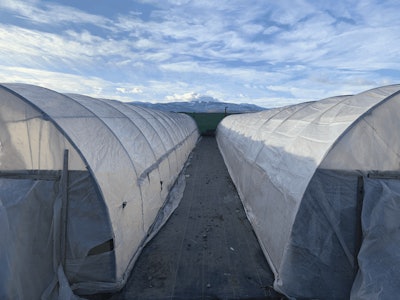
3. Make your mothers happy
Moberg also takes advantage of the offseason to clone his mother plants, so he can start each season with a clean stock. Last year, he hit some snags when fungus gnats infected his clones with Pythium. This year, Moberg contracted his cloning to other growers to reduce the likelihood of infection. “If you think about cloning in a farm environment where you’re surrounded by biological activity, it’s pretty difficult,” says Moberg, who expects more operations to pursue this model as the industry matures.
Until outsourced propagation becomes more widespread, many cultivators continue cloning in-house. Puffin Farm starts by sanitizing the propagation greenhouses, “so we have a nice clean area with no pests hanging around to infect our new plants,” says Stefano, who starts cloning in February to get plants ready by June.
“It’s really important to keep the mothers healthy because if they’re neglected over the winter, it makes the cloning process much more difficult,” Stefano says. “It’s worth investing in those moms by using high-quality nutrient solutions and staying on top of integrated pest management to keep pests and powdery mildew in check over the winter.”
4. Streamline business operations
While plant health is important, cultivators should also use downtime to examine their business processes, says Ryan Douglas, owner of cannabis consultancy Ryan Douglas Cultivation. “Look back on the entire year to think about the weak points, so you can refine and get better,” Douglas says. “You might want to look at things like the process of harvesting and transporting the material.”
Douglas suggests using the offseason to research new technology and equipment that could streamline operations. For example, Moberg has been building his own inventory software for years. He’s finally rolling it out internally, after revamping CannaSol’s packing area with new lighting, tables, computers and a big-screen monitor that displays all the orders in queue to help the packing team track progress.
“Take the time to look at your layouts—where things are located, your distances and steps and how people communicate—to become as efficient as possible,” Moberg says.
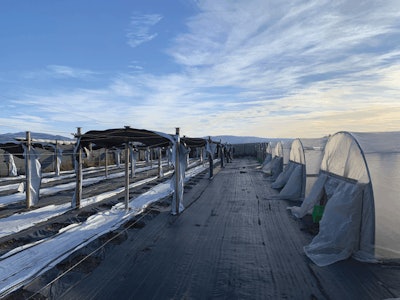
5. Evaluate employees
Personnel issues can derail business plans, impact quality and overall morale. Douglas suggests that cultivators leverage the offseason to review their current staff. “If you have some problematic employees or things aren’t going well during crunch time, it’s easier to push through and make adjustments in the down season rather than fire someone and rehire in the middle of the busy season,” he says.
Douglas also warns against keeping people on staff who aren’t considered “key employees” if there isn’t enough work to keep them busy. “Eventually you reach a point where everything is clean, the inventory has been taken and the equipment has been maintained,” Douglas says. “If you’re making up projects just to keep people on the payroll, the offseason becomes more expensive than it needs to be.”
Higher-level positions, such as the head grower and section growers, should be on the payroll year-round, Douglas says. While production assistants and other individuals who help with tasks—such as filling pots, cleaning grow rooms and trimming harvests—are valuable, they can be more easily replaced if lost during the offseason, Douglas says.
6. Preorder purchases
Get a head start on purchasing supplies and materials by preordering in bulk.
Puffin Farm begins soil testing in early spring to determine the exact amendments needed each year. “A lot of people will just go out and buy fertilizer based on personal experience or what they heard, but there’s a scientific basis for testing the soil and adding only what you need,” Stefano says.
This approach can help cultivators beat the rush for amendments in spring. Waiting until the last minute to order supplies could cost more, because preordering may unlock discounts.
“Take advantage of material and supply agreements that can be advantageous if you purchase in the beginning of the year,” Douglas says. “For a lot of greenhouse and farm suppliers, January is a pretty slow month. So, to make up for that, a lot of companies offer bulk discounts or early purchase discounts when you commit to making purchases for the rest of the year.”
7. Rest and relax
Although there are plenty of priorities to tackle during the offseason, farmers shouldn’t pack their winter schedule so full that they don’t get a break. “Take a breather,” Moberg recommends. “Make sure that you have the mental state to keep it up.” Moberg takes time to hit the slopes and makes corporate passes available for employees to do the same. He stresses the importance of taking time off to unwind and celebrate the season’s successes.
Vacations “are the light at the end of the tunnel when you’re working 60 hours a week,” Douglas says. “It feels good to earn that, so you push hard during the growing season, and then in the offseason, you rest.”
The offseason should give cultivators a chance to recharge and start the next growing season ready to meet their business goals, Gordon says. “It’s really important to rest and restore as much as possible, because we are in an industry that is incredibly energetically demanding,” she says. “We need to be able to focus our energy come spring to really fulfill the potential of each season.”









